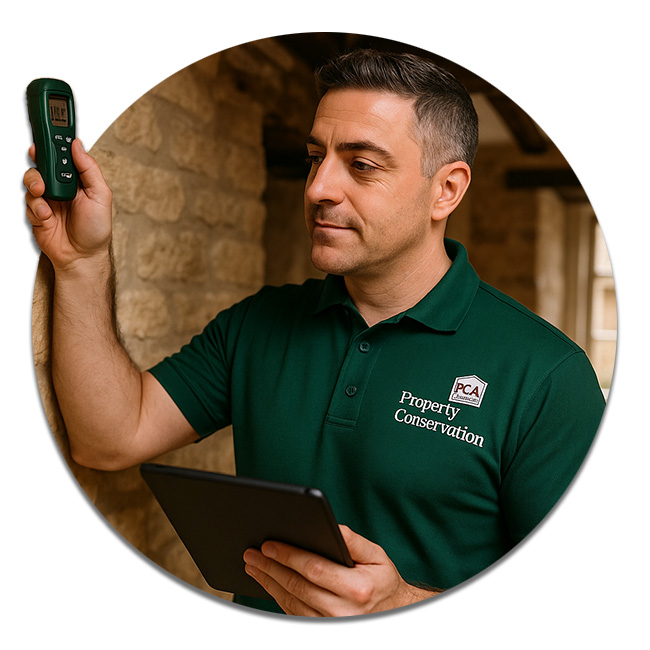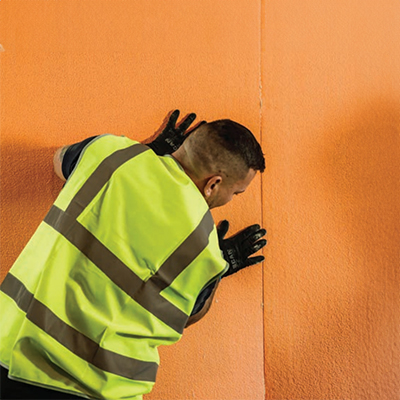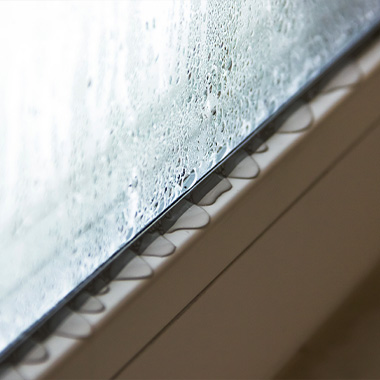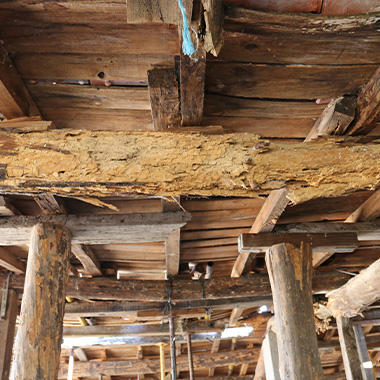Dry rot and wet rot can affect buildings of all ages and if decay is discovered it should be identified and remedial action taken without delay.
Fungal decay occurs in timber which becomes wet for some time and is the result of the attack by one of a number of wood-destroying fungi. The most well-known are Serpula lacrymans—the true dry rot fungus—, Coniophora puteana the Cellar fungus and Poria vaillantii the Pore or Mine fungus. Many other fungi also occur and some have recently been particularly linked with decay in door and window frames.
Dry rot is only caused by Serpula lacrymans and is the most serious form of fungal decay in a building. It can spread onto and destroy much of the timber.
Dry Rot treatment safely and easily treats damage to the structure of your home. A detailed inspection will be undertaken by a specialist who will carry out an external and internal investigation of the property. We will ensure that your home is safe, and the value of your property is protected.
What is Dry Rot?
Dry rot in your property is serious and it should always be resolved as soon as possible. It is an aggressive destructive form of decay in a building as it spreads away from the source of damp and destroys timber and other property fabric.
Dry Rot can spread through a complete building and destroy the fabric of the property. Dry rot can affect any unprotected timber which becomes damp with a moisture content of above 20% which can be achieved quite easily in a property.
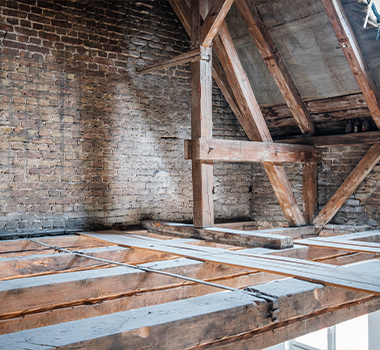
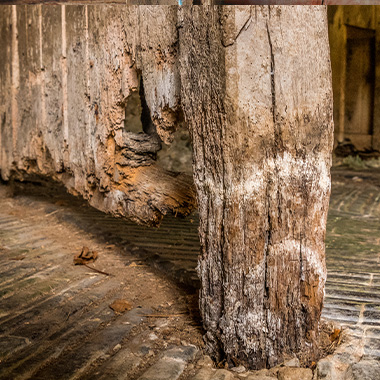
Identifying Dry Rot
- TImber that has shrunk and cracked along the grain of the timber
- The rot affected timber may leave a surface veneer intact hiding the rot
- Timber can feel soft and spongy to the touch
- The mycelium can have a yellowish tinge
- The mycelium turns to grey when older
- Damp musty smell
- Fruiting bodies grow when the rot is well established (mushroom like appearance)
- Red spore dust from the fruiting body is evident in rooms.
- Paint finish can appear damaged, highlighting the cracked timber below
- Dry rot mycelium will grow along and through walls to find more timber to colonise and can spread right through a property
How it Works

